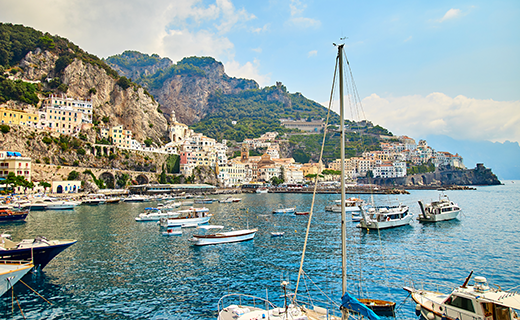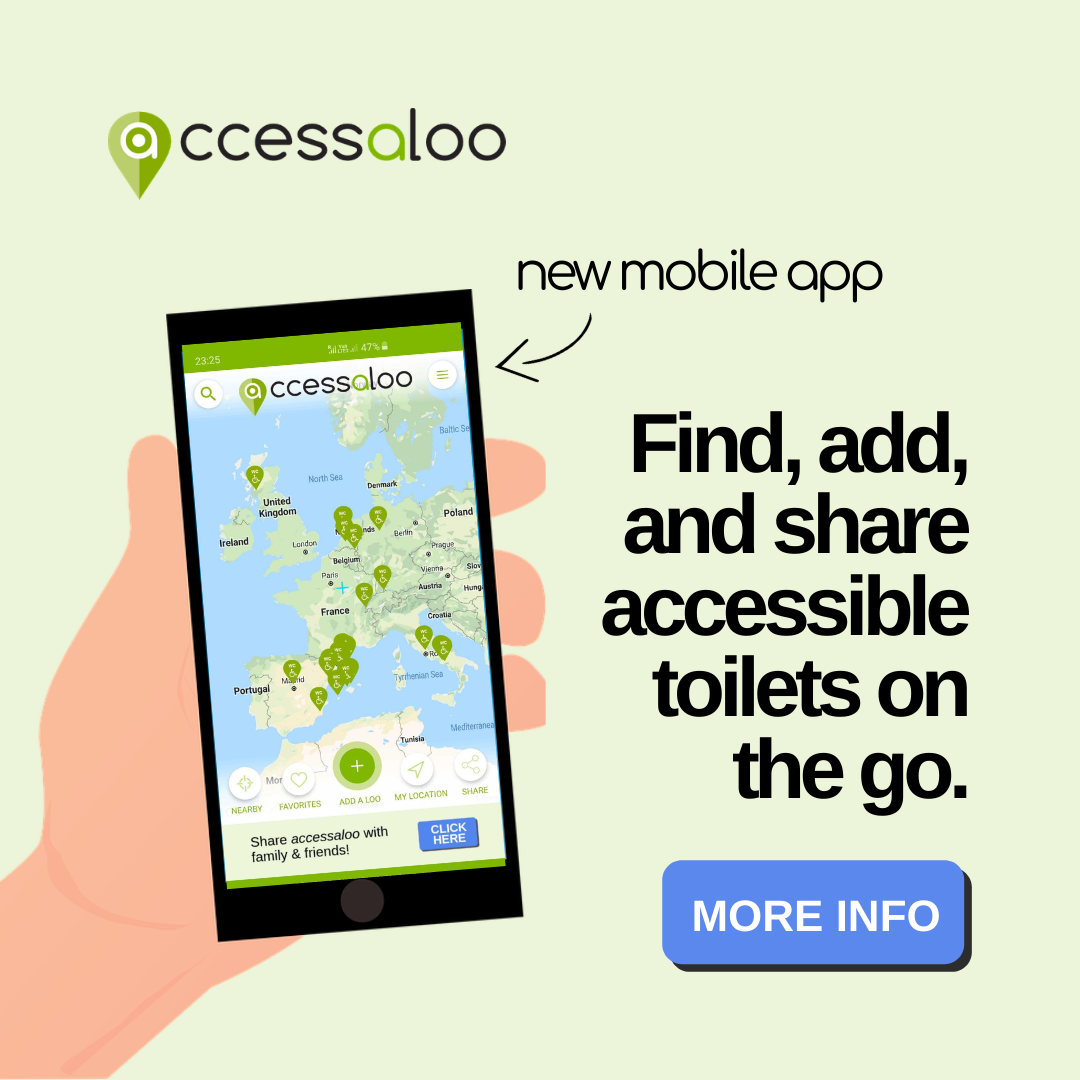Visiting Ephesus is like stepping back in time to one of the most well-preserved ancient cities of the world. However, for travelers with physical disabilities and wheelchair users, navigating this historic site comes with unique challenges.
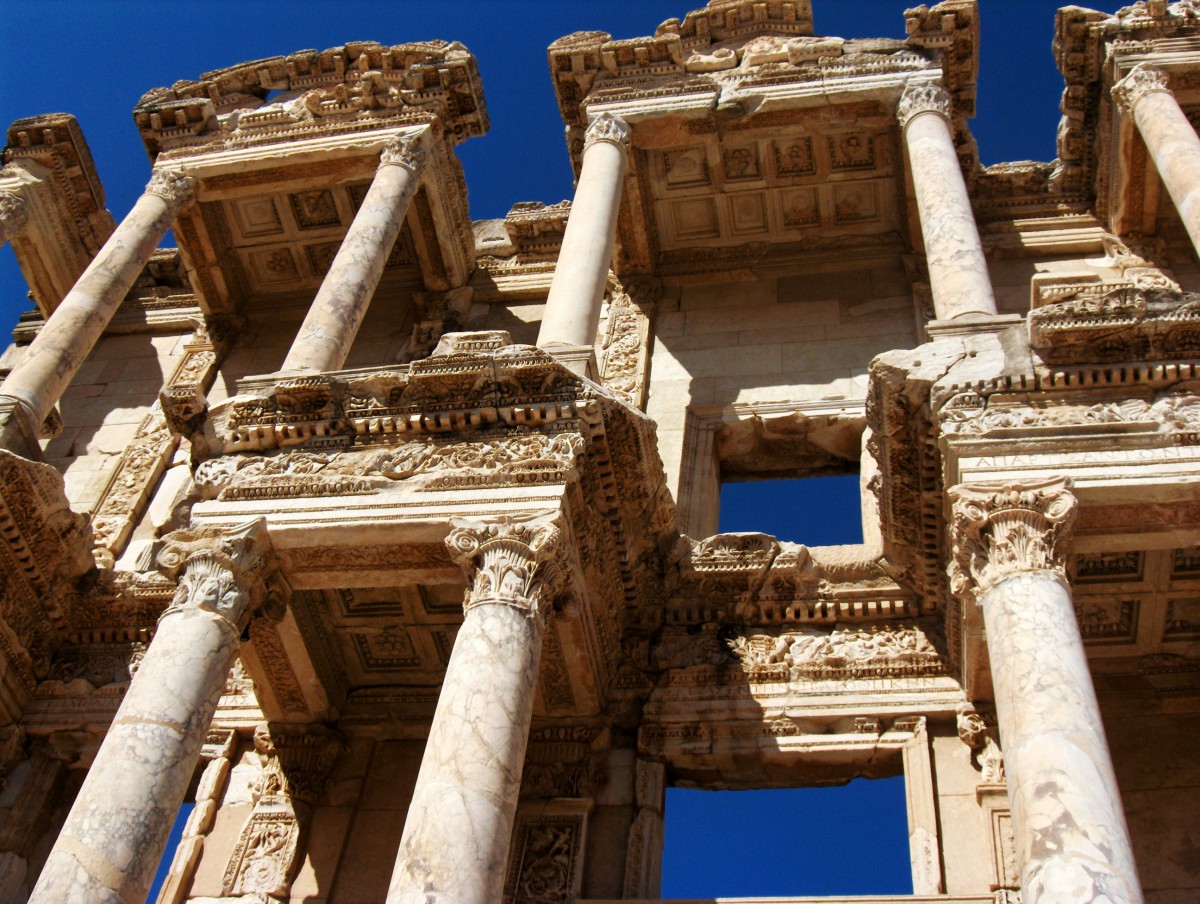
In this guide, we provide essential information on the accessibility of Ephesus, practical tips for an easier visit, and details on transportation and tour options.
Ephesus is one of the most remarkable ancient cities in the world, located in present-day Turkey. Once a major hub of commerce, culture, and religion in the Roman Empire, it flourished as a thriving port city known for its grand temples, impressive theaters, and intricate marble streets.
Founded in the 10th century BCE by Greek colonists, Ephesus later became one of the most significant cities in Asia Minor under Roman rule. It is home to several well-preserved ruins, including the world-famous Library of Celsus, the majestic Great Theatre, and the Temple of Artemis—one of the Seven Wonders of the Ancient World.
Beyond its architectural grandeur, Ephesus was also an important center for early Christianity, mentioned multiple times in the Bible and visited by figures such as Saint Paul and Saint John.
Today, Ephesus is a UNESCO World Heritage Site, attracting millions of visitors who come to explore its rich history, stunning ruins, and the fascinating stories that echo through its ancient streets.
Is Ephesus Wheelchair Accessible?
Ephesus is an expansive archaeological site featuring cobblestone streets, steep inclines, and uneven marble pathways, making full accessibility difficult. However, improvements have been made, including a designated wheelchair-friendly route and accessible entrances.
With proper planning and assistance, wheelchair users can explore key landmarks such as the Library of Celsus and the Great Theatre.
Book your very own Ephesus tour
Are you interested in visiting Ephesus for yourself,
Click on the button for more information!
Accessible Entrance Options
When visiting Ephesus as a wheelchair user, choosing the right entrance is crucial:
If the disabled traveler has an official disability card, they can enter the sites free of admission.
✅ Lower Gate Entrance (Best for Accessibility)
- Located near the Great Theatre
- Provides the easiest access to main attractions
- Wheelchair-friendly paths available (though assistance may still be required)
❌ Upper Gate Entrance (Not Recommended)
- Located near the House of the Virgin Mary
- Steep and rocky pathways make it difficult for wheelchair users to navigate
- Avoid unless using a specialized tour with assistance
Accessibility of Key Attractions
Library of Celsus
✅ Accessible
The Library of Celsus is one of the most iconic structures of Ephesus, originally built in the 2nd century AD as a monumental tomb for the Roman senator Tiberius Julius Celsus.
The stunning two-story facade with its Corinthian columns is a masterpiece of Roman architecture. Wheelchair users can access the site via a hard gravel pathway, allowing them to admire the grand exterior up close.
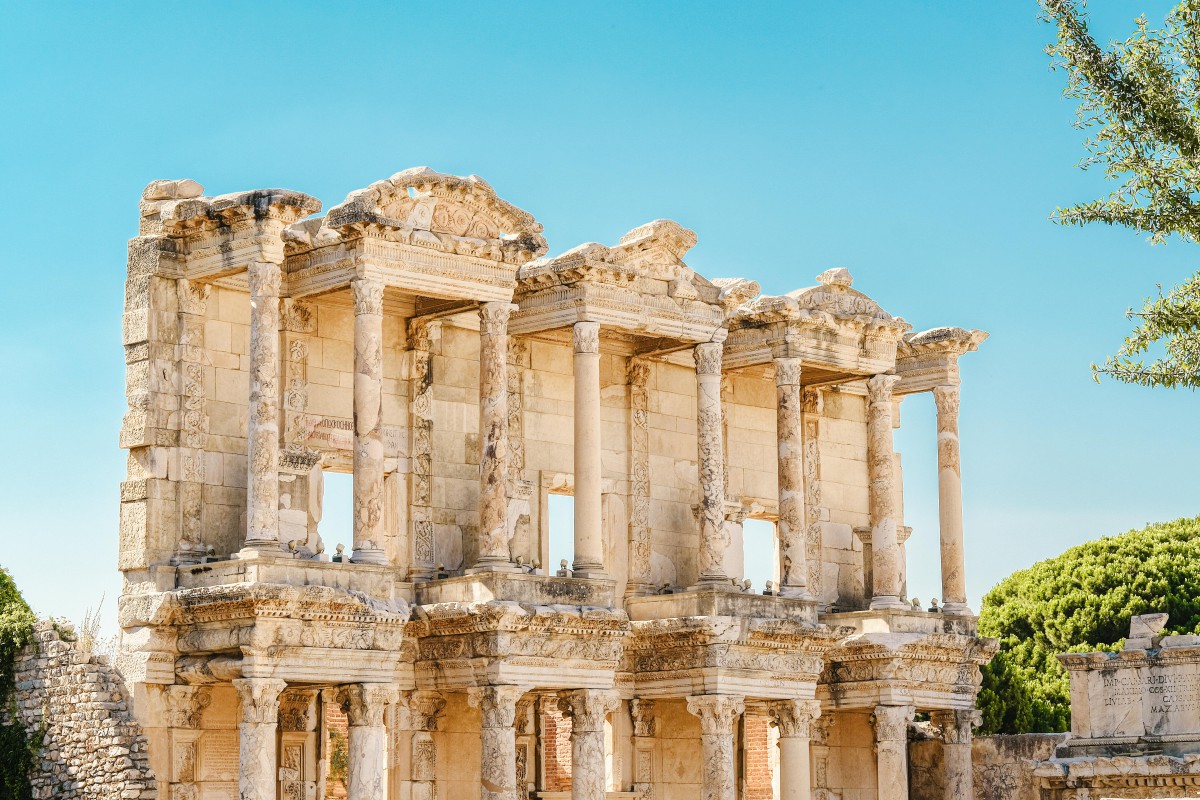
Harbor Street
✅ Accessible
Harbor Street was once the main thoroughfare leading to the city’s port. This wide, straight road was used for grand processions and trade, connecting Ephesus to the outside world.
Today, it is one of the easiest routes for wheelchair users, featuring a hard gravel path that provides relatively smooth access.
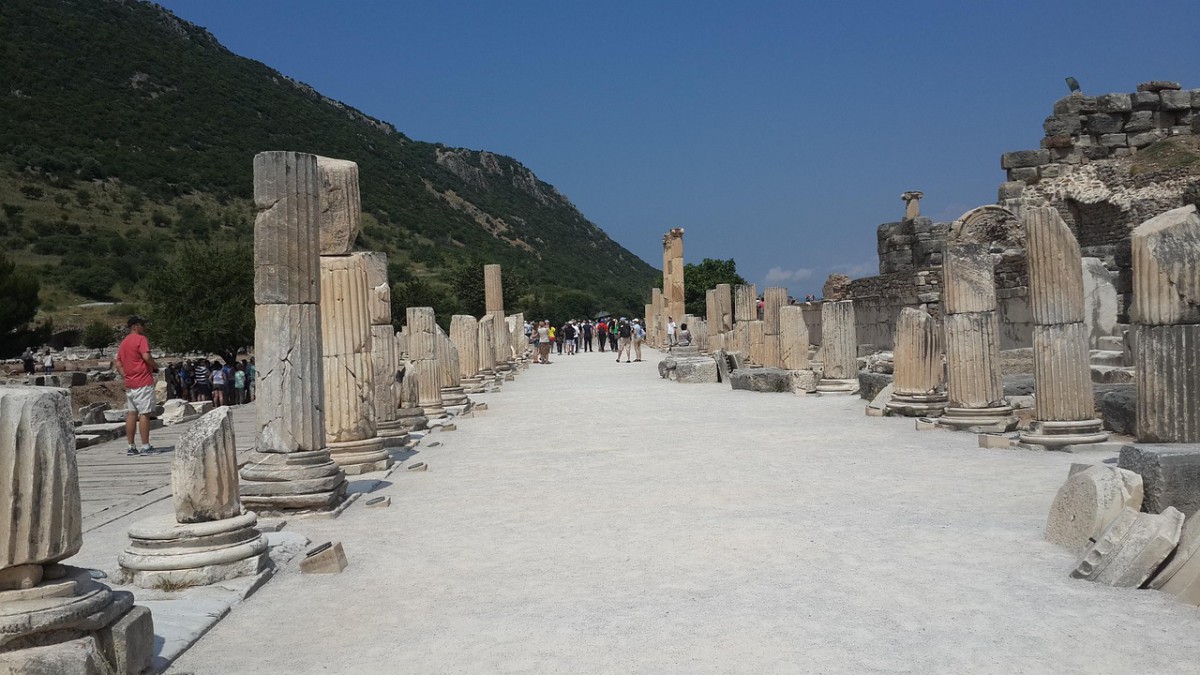
Great Theatre
⚠️ Partially Accessible
The Great Theatre of Ephesus is one of the largest ancient theaters in the world, with a seating capacity of 25,000. It was used for gladiator fights, plays, and political gatherings.
Wheelchair users can reach the lower levels, but upper seating areas remain inaccessible. As of March 2025, restoration work is underway, limiting access to outside viewing only, which still provides a great opportunity for photography.
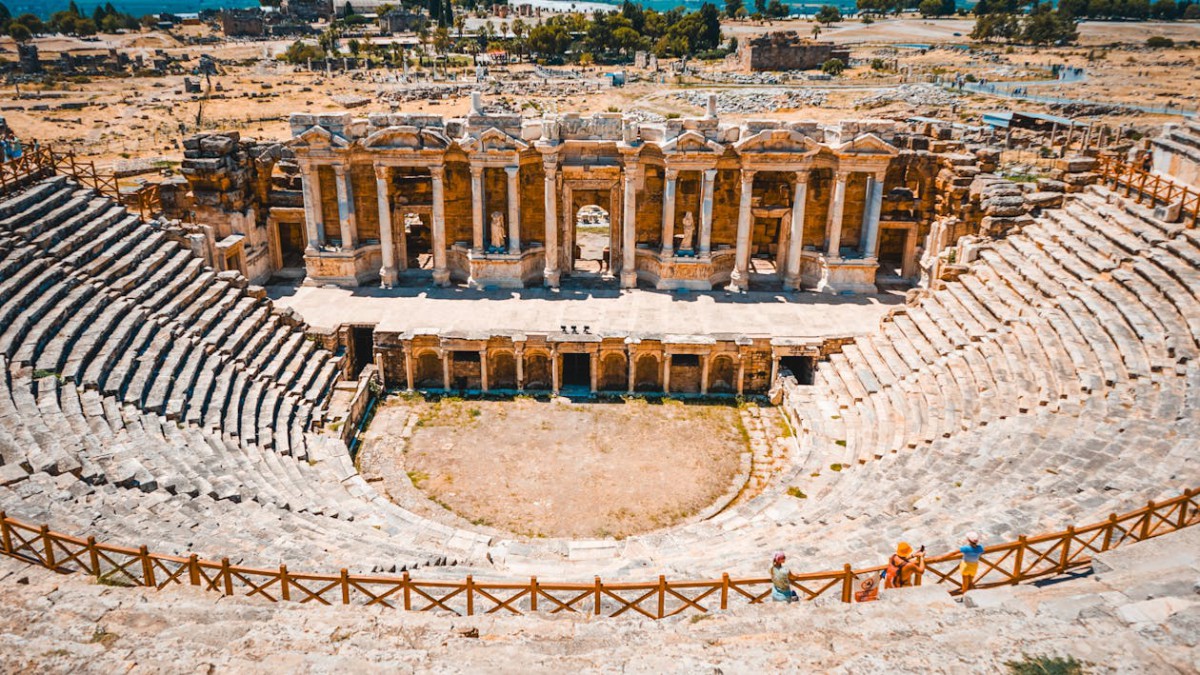
Temple of Hadrian
⚠️ Difficult
Dedicated to Emperor Hadrian, this temple is one of the best-preserved structures in Ephesus. It features intricate relief carvings depicting the mythological foundation of the city.
Due to uneven terrain, wheelchair users may only be able to view the temple from a distance.
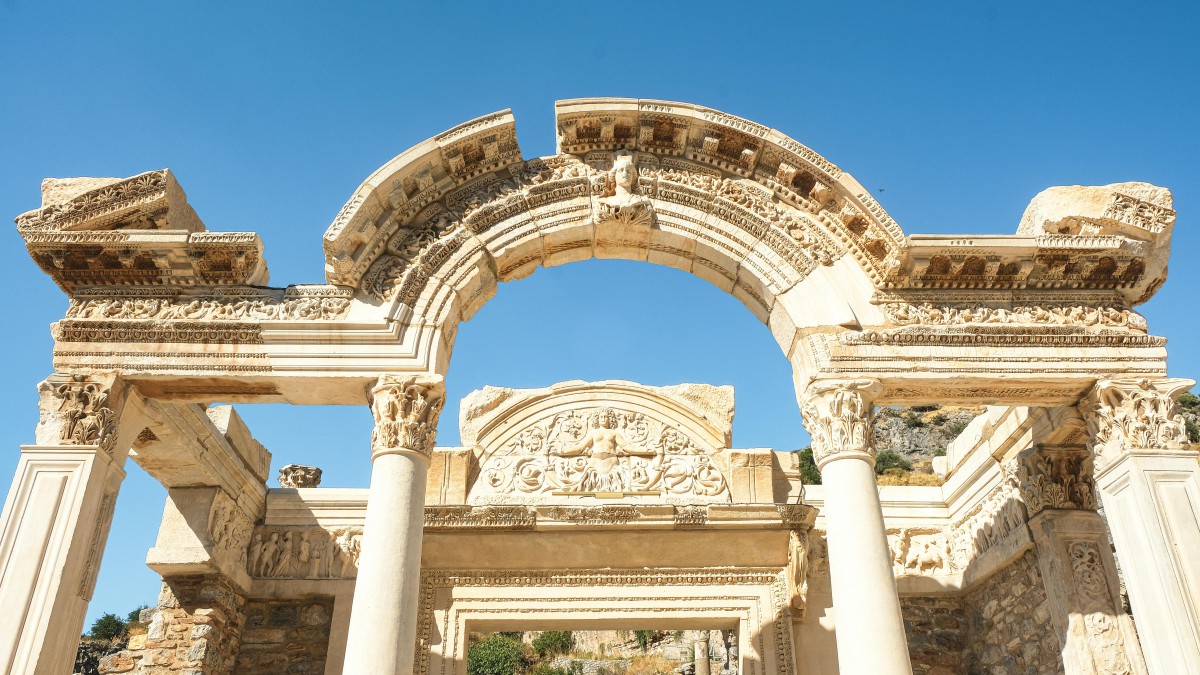
Terrace Houses
❌ Not Accessible
The Terrace Houses, also known as the “Houses of the Rich,” give insight into the luxurious lifestyles of Ephesus’ elite. These houses feature beautifully preserved mosaics and frescoes.
However, they are built on steep terraces with many steps, making them inaccessible to wheelchair users.
Marble Road
⚠️ Partially Accessible
Marble Road, connecting major landmarks in Ephesus, was used for processions and daily activities. The terrain is rough, and assistance is recommended for wheelchair users.
House of the Virgin Mary
❌ Not Accessible
Believed to be the final home of the Virgin Mary, this sacred site attracts many pilgrims. However, a six-inch step at the entrance and the absence of ramps make it inaccessible for wheelchair users.
Basilica of St. John
✅ Partially Accessible
Built in the 6th century AD by Emperor Justinian, the Basilica of St. John is believed to house the tomb of St. John the Apostle. Some ramps are available, but the terrain remains uneven.
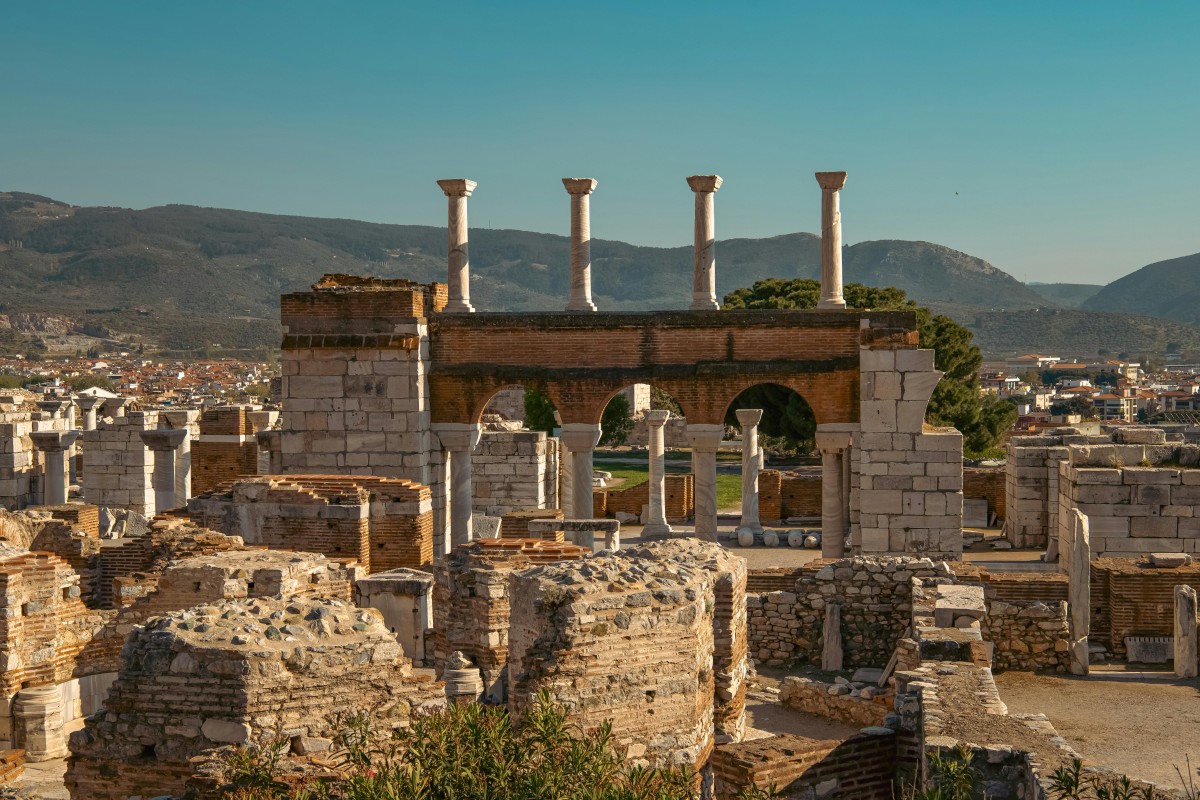
Get inspired, continue reading
- Wheelchair Accessible Cultural Highlights of Spain
- Explore Disabled Accessible Travel’s destinations
- Accessibility guide of Acropolis and Museum
- Disabled Accessible Travel Expands Accessibility Services with Launch of Mobile App ‘accessaloo’
- Wheelchair Accessible Transfers
- Accessibility of St. Petersburg
- Mobility Equipment Rentals
- 7 Wheelchair-friendly Restaurants in Barcelona
- Everything You Need To Know About Tipping In Europe
- Nova Icaria And 4 Other Accessible Beaches Barcelona Has To Offer
- Accessibility guide Alhambra
- Accessible Train Tickets in Spain – Renfe
- Accessible islands in Europe
- Top 8 Accessible Destinations in Europe
- Accessibility guide Parliament Budapest
- A useful guide to European toilet keys
| Attraction | Accessibility | Notes |
|---|---|---|
| Library of Celsus | ✅ Accessible | One of the easiest landmarks to reach. |
| Harbor street | ✅ Accessible | Accessible with a wheelchair on a hard gravel pathway. |
| Great theatre | ⚠️ Partially Accessible | Lower levels are reachable, but not upper seating. |
| Temple of Hadrian | ⚠️ Difficult | To be seen from a distance outside for viewing and picture purposes. Able-bodied visitors also do not enter inside the structure. |
| Terrace Houses | ❌ Not Accessible | Many steps and narrow paths. |
| Marble Road | ⚠️Marble Road | Rough terrain, assistance needed. |
| House of the Virgin Mary | ❌Not Accessible | There is a 6 inch step right after the main entrance hall. No ramps available. |
| Basilica of St. John | ⚠️Partially Accessible | Some ramps available, but still uneven terrain. |
Challenges and Tips for Wheelchair Users
✔ Start at the Lower Gate for the most accessible route.
✔ Hire a private licensed guide with accessible travel experience – They can assist in navigating difficult areas.
✔ Bring a companion – Even with accessible routes, some areas require help.
✔ Wear sun protection and bring water – Shade is limited, and it can get very hot.
Accessible Tours and Transportation
For a smoother visit, consider booking a wheelchair-accessible tour. DAT operators provide:
- Accessible vans with ramps
- Slow-paced tours tailored for mobility-impaired travelers
- Custom itineraries to visit the easiest-to-access sites
For further information check out or tour page
Getting to Ephesus:
- From Kuşadası (Cruise Port): Private accessible vans available; regular taxis are not always wheelchair-friendly.
- From Izmir Airport or Selçuk: Pre-arrange accessible transportation, as public transport is not fully adapted.
Accessible Facilities and Restrooms
- Accessible restrooms are available at the main entrance gates.
- The cafes inside Ephesus are wheelchair accessible, no need to bring your own snacks.
- Some paths have handrails, but uneven surfaces still present difficulties.
Alternative Accessible Sites Nearby
If Ephesus proves too challenging, consider these easier historical sites:
- Basilica of St. John (Selçuk) – Some ramps available.
- Şirince Village – More accessible streets, though some areas are steep.
- Ephesus Museum (Selçuk) – Fully accessible with artifacts from
Ephesus.
Final Thoughts
Ephesus may not be fully wheelchair-friendly, but with careful planning and the right tour services, it is possible to experience its rich history. By choosing the right entrance, using accessible transportation, and booking a guided tour, travelers with mobility challenges can enjoy a memorable and rewarding visit to this incredible ancient site.
F.A.Q:
How accessible is Ephesus?
The majority of the accent site of Ephesus is accessible to wheelchair users and people who have mobility issues. The tour can be enjoyed on a hard gravel walkway. Thus, avoiding cobblestones and any other unpleasant physical challenges. We do still recommend that you book a tour with a licensed guide and bring a companion along to assist where needed.
Is Turkey accessible for wheelchair users?
Many facilities in Turkey have adaptations for wheelchair users. Whilst traveling in Turkey can sometimes be a bit of a hassle, the country is making making strives to become more accessible. Most people are more than happy to assist you if you were to require some help.
How long does it take to walk through Ephesus?
At Disabled Accessible travel we offer a tour of Ephesus which has a total duration of 6 hours. This includes both a visit to the accent city and a visit to the archeological museum. If you were to visit Ephesus without a tour it would take you approximately between 1-4 hours, depending on your interest and pace.
Are there toilets at Ephesus?
Yes, there are restroom facilities available at both entrances at Ephesus. However, if you are looking for wheelchair accessible restrooms, head to the lower entrance. if you are looking for more accessible toilets in Turkey, check out the accessaloo app!
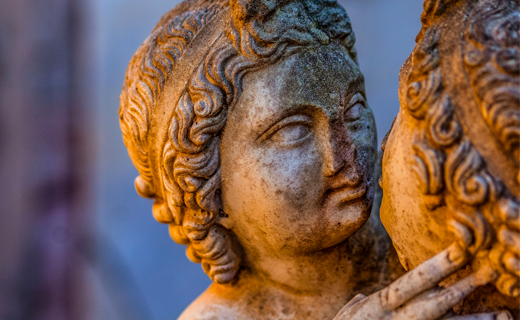
ACCESSIBILITY ANCIENT OSTIA
READ MORE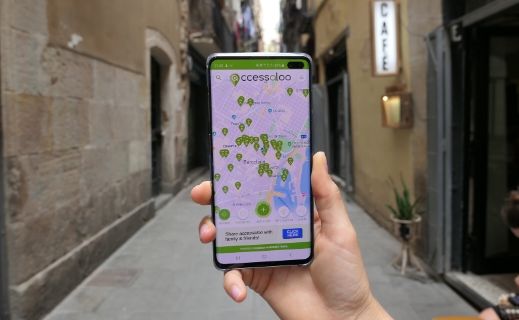
ACCESSIBLE TOILETS
READ MORE